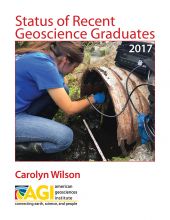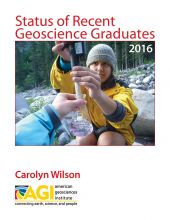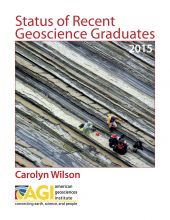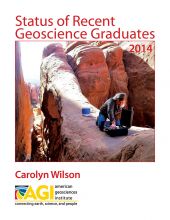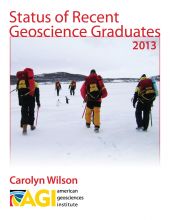The American Geosciences Institute’s (AGI) Status of Recent Geoscience Graduates 2017 provides an overview of the demographics, activities, and experiences of geoscience degree recipients during the 2016-2017 academic year. This research draws attention to student preparation in the geosciences, their education and career path decisions, as well as examines some of the questions raised about student transitions into the workforce. This is the fifth consecutive year of this survey and report, and with this release, we are starting to detail emerging trends in the experiences of postsecondary geoscience students.
Major findings from the Status of Recent Geoscience Graduates 2017 report include:
- The demographics of geoscience degree recipients has remained steady, with female participation of at least 40 percent at all degree levels, but underrepresented minorities participation remains at or below 12%. However, percentages of graduates that are unwilling to provide their demographic information has been steadily increasing since 2014.
- Over the past five years, the majority of geoscience graduates complete Calculus II as their highest quantitative course, but participation in higher quantitative courses such as differential equations and linear algebra is low, with as few as 25 percent of bachelor’s recipients having taken those courses, and graduate degree participation levels are marginally higher. This quantitative skill deficiency is viewed as a critical negative impact on employment resilience for many new graduates.
- Nearly every graduate participated in at least one field or research experience before graduation, and most students participate in multiple field and research experiences.
- Internships provide graduates with critical professional development skills and experiences, but only 40% of bachelor’s graduates, 68% of master’s graduates, and 48% of doctoral graduates participated in an internship before graduation, consistent with the trend over the past five years.
- Hiring of recent graduates at graduation is at its lowest in 5 years for all degree levels. This is particularly pronounced for doctoral graduates dropping from 70% in 2014 to 36% in 2017. A number of factors are likely at play, including a slow recovery in the resources industry, displacement of some jobs with automation, and uncertainty in the regulatory environment with the current Administration.
- 2017 had the lowest percentage in the last five years of bachelor’s graduates (35%) and the highest percentage of master’s graduates (31%) planning to attend graduate school immediately after graduation. Even though graduate programs have generally been at full capacity, recent slowing in hiring of new graduates is encouraging recent graduates to consider another degree delaying entry into the workforce.
Geoscience graduates at all degree levels tend to receive a strong technical background in geoscience. But after a number of years of strong hiring, there is a marked slow-down in hiring of new graduates. There may be a number of factors leading to this slow down, including softness in hiring in the resources industry, uncertainty about environmental regulations, and the emergence of automation offsetting some middle-skill geoscience jobs. Based on surveys of prior graduates, students with strong quantitative skills have fared well at gaining and retaining employment. Likewise, non-technical skills such as effective communications, as well as business and finance exposure, have been identified as key employer desires. However, these skills are not necessarily readily available within the formal degree programs.
AGI’s Geoscience Student Exit Survey is one of the few tools that help us track these changes as experienced by recent graduates, and AGI recognizes the importance of continuing this research study annually in order to provide this information to all within the geoscience community

